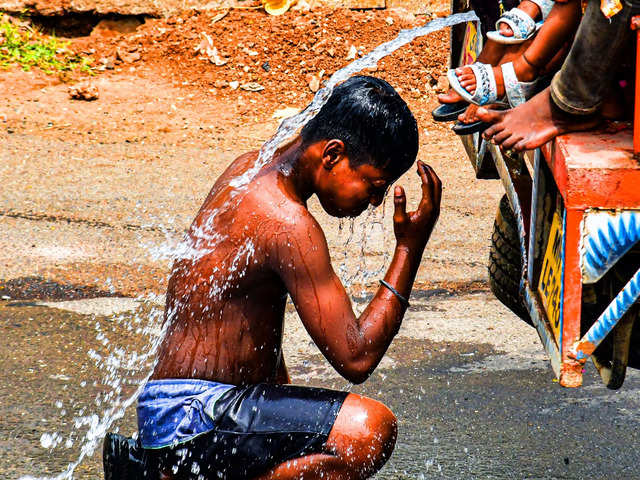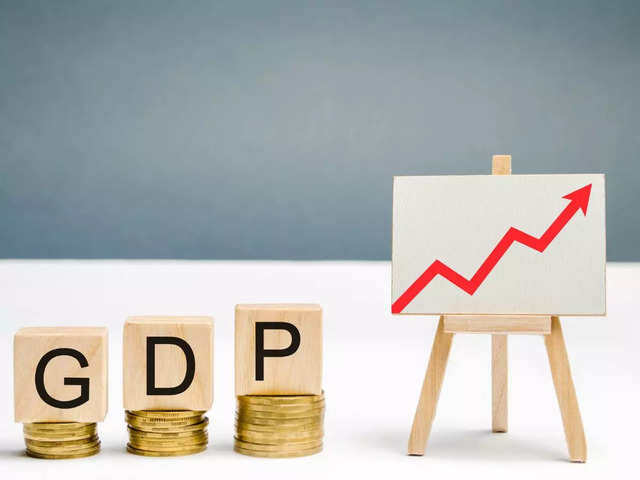
Future of digital marketing in India
Digital Marketing: Trends to watch out for in 2022
Dec 9, 2021, 10:06 IST
ad-agencies
Metaverse, social commerce and personalisation in a cookie-less world: Here’s how digital marketers are preparing for the future
- If an industry can flourish during a global pandemic and one of the worst economic crises we had to face, it can survive through any challenges that come in its way.
- Digital media has proven time and again how integral it is to the advertising industry’s survival and growth.
- However, every year brings with it a set of challenges different from the previous one. So, in our second year-ender, we look at digital marketing, its growth trajectory and look at what lies ahead.
- Experts are optimistic that 2022 will be a game-changer that will help them redefine a lot of rules in advertising, with smarter marketing techniques.
Digital marketing in India is also at the cusp of a massive revolution as brands explore options beyond
From buying medicine to groceries or shopping for a wedding, many consumers who would otherwise prefer to browse and purchase in person, have moved to online shopping due to the limitations that the pandemic threw at them. This quick change in consumer behaviour, accelerated by the pandemic, gave a push to e-commerce, performance marketing, augmented reality, mobile marketing, digital animation, video content, voice search, audio advertising and influencer marketing. In this last year, Instagram has also moved beyond just a discovery platform and influencer-led commerce has arrived earlier than expected. According to WARC, Instagram grew to become the largest social media platform globally in 2021 after overtaking the core Facebook platform for the first time. Instagram is forecast to grow to control over a third of the global social media market in 2023. Apart from social commerce, Instagram’s parent company’s Metaverse was the hot topic and trailblazer of 2021. In 2022, more brands will prepare for the next phase of the internet, include Metaverse in their marketing strategy and experiment with AR and VR.
As we enter a new year and it brings a new set of challenges, different from the previous one, we speak to digital marketing experts, discuss the industry’s growth trajectory and look at what lies ahead. Here’s what experts had to say about digital marketing’s future in India:
Neena Dasgupta, CEO and Director, Zirca Digital Solutions:
The dominant trend that seems imminent and set to grow is the cross media measurement. The customer connect is critical given the significant shift in consumption patterns. Understanding the impact of the mediums and planning connect basis that is an inevitability. This would require customer segmentation by cohorts, enablement of linking these cohorts between brand and publisher (any medium) and tracking response and measuring attribution using data integration at a CRM level. The entire system is data and tech driven supported by psychometric tools for the purpose of cohort creation and mapping. All in real time.
Single source panel is the need of the hour. And there are multiple measurement organisations working together on this. More importantly it’s critical that a brand understands trading needs to be made more efficient by enabling customer segmentation in real time that can be activated using programmatic means, also in real time. The data pool and nodes will take some time to build as in any data led ML, and eventually it’s data science and creativity at work to engage prospects.
Harshil Karia, Co-founder and Managing Director, Schbang:
I think two big trends will dominate marketing:
1) More and more brands using a combination of technology to enrich what they do at last mile conversion, data management, and using the marketing data as signals to business and sales teams more effectively. Expect more martech being deployed. And expect more people to learn martech and it's capabilities and the ability to learn and unlearn the same.
2) The use of automation will start to affect creativity. One ad can be delivered in a 100 ways using video Ai and voice. One copy can be written in many ways customised to context. The writers to can work well with an Ai and make it their friend will do well. An Ai works as well as the instructional data it recieves.
The factor that will help drive this is increased demands from CEOs to integrate the marketing function into large scale business processes and have the vision to see the value it can unlock - a push but also some patience. The automation allows marketing to now affect at scale far more parts of the organisation than they already have. Marketers and creators will do well to be curious and have a learn it all attitude while knowing and deepening their craft on copy and design."
Prashant Puri, Co-Founder & CEO, AdLift:
We’re entering the organic first age where prioritizing organic search becomes paramount. We see content playing a vital role here, be it optimizing for voice search or improving user experience via engaging content across all brand touchpoint.
We estimate influencer marketing spends to catapult to $150 to $225 in 2022 with brands doubling down on influencer led marketing campaigns across nano, micro and macro influencers - capturing 7 to 9% of overall digital marketing spends in India.
Chandni Shah, Founder and COO, Kinnect:
The one trend I see dominating 2022 is Social Commerce. The e-commerce industry experienced accelerated growth with the pandemic, and social commerce emerged as the 'flavour of the year'. Social media platforms too joined the bandwagon and introduced features and tools to enhance the consumer journey - from product discovery to purchasing them on/through the platform itself.
Covid-19 pandemic in 2020 contributed significantly to the new era of online social retail. In 2020, Facebook introduced Instagram shops, integrating e-commerce and the world's most popular social media platform. In the Covid-19 pandemic, the worldwide social commerce market is anticipated to increase at a whopping 31.4%. By 2021, social commerce will continue to expand as consumers stick to digital habits, whilst e-commerce and conventional retailers adjust to the post-Covid-19 reality. Combining e-commerce with social media can be highly valuable; it allows consumers to look for brands via social media platforms and search for products they wouldn't usually look for on an e-commerce website. Brand hunt, influencers, and mobile payments are examples of social commerce in action. Thanks to AI, marketers can now gather real-time data on consumers and transform it into actionable insights.
The upcoming year will see more users turn into buyers and make purchases through social commerce. Brands that haven't explored the opportunity yet will be quick to jump onto this trend. To sum this up, the shorter the buyers' journey will be, the lesser chance of them abandoning products in their cart.
Hareesh Tibrewala Joint CEO of Mirum India:
Covid has taught us that every business, big or small, B2B or B2C, irrespective of the category -- needs to have a way of reaching out to the consumers online, be able to showcase ones products and services, collect payment and make delivery. We will see e-commerce driving investments in the area of technology, content creation and media. We will see continued expansion of market places as well as emergence of D2C brands. Within ecommerce we will see movement towards voice-based ordering as well as conversational commerce
Harsh Shah, EVP, Business- North and West, Dentsu Webchutney:
2022 is going to be the year of alternate digital realities. Yes, the metaverse! That moment in time where our digital life seamlessly co-exists with our physical life. That year, where our virtual possessions are of as much worth as our real-life possessions. Bank accounts and crypto wallets. Art works and NFTs. One of the key outlooks for brands should be to see how they can use 2022 to prep themselves to be not only present in the metaverse but also for immersive storytelling.
With growing interest in the concept and it being part of popular culture, will accelerate adoption. It will outgrow the internet in adoption. Also, with 5G hitting the market, it can act as a great platform to drive that initial burst of growth.
Shradha Agarwal, COO and Strategy Head- Grapes:
In my opinion, AI will play a crucial role in the digital marketing ecosphere. We have witnessed that from data collection to geo-fencing, AI has been helping businesses grow extensively. The technology comes with such a great combination that it has been used widely in certain aspects such as content creation, chatbots and search engines.
Sectors like retail, e-commerce, banking, healthcare, gaming and others are already backed upon on artificial intelligence as it helps them recognize consumer behaviour, search patterns and it also helps businesses understand how customers find their products and services. In the coming time, we would see many others sectors trying their hands on the tool marketers want good sales and better ROI through their marketing strategy. Therefore, AI applications can predict what customers are likely to buy in the future based on their past purchases and browsing history. With this approach, it becomes easier for them to target their users.
Also, AI use is becoming of utmost importance for those companies whose business depends on smartphones and drive sales through social media. Hence, AI as a market will grow exponentially.
Raman Mittal, CMO and Co-Founder, TO THE NEW:
I believe the dominant trend of 2022 will be Contextual Targeting.
Contextual targeting isn’t something new, but for a while it was in the shadows because it’s performance was lower than Behavioral Targeting that used cookies.
But in this cookie-less world, the modes of serving personalized ads to the audience have shrunk and marketers are moving back to contextual targeting. Whether it is category, keyword, or semantic contextual targeting, it will be exciting to see future developments in this arena.
Mohit Gyanchandani, Head, media planning and growth, DCMN India:
For several years, the marketing industry has witnessed an ongoing contest between performance and brand marketing in terms of budget, resources and impact. But in 2022, we predict that the old dichotomy between the two will become increasingly blurred. This is in part due to the impact of COVID on businesses. After a volatile 18 months, many organisations are re-evaluating their goals and moulding themselves to survive and thrive in this new economy. Above all, companies know that to succeed, they need to build brand salience.
We’re already seeing that for many of our clients, it’s not simply about brand versus performance anymore: the two need to work in tandem. That means bringing both sides of marketing even closer together and building fully integrated, 360 degree campaigns that power growth and build brand recognition across online and offline channels. Marketers will also start looking at results more holistically. Instead of just looking at one specific channel and its impact on direct KPIs, they will look at results through a broader lens: for example, the impact that a TV campaign might have on digital channels like search or retargeting.
This doesn’t mean that pure performance-driven campaigns are going away completely. The best approach for a brand will always depend on the company’s stage of growth and their overall marketing goals. But for companies looking to scale, taking a fully integrated approach will be key to achieving cut-through in an increasingly competitive industry."
Ankur Gattani, VP - Growth and Marketing, WebEngage around MarTech:
Majority of Indian organizations have been using a mix bag of first-party (1P) and third-party (3P) data for marketing and advertising. However, the usage and impact of 1P data are expected to amplify in 2022 in a big way. This trend will dominantly be driven by the legal framework that will prohibit the usage of 3P data and force the adoption for 1P.
Organisations like Amazon and Netflix have spoilt the customers with their personalisation mechanisms. What this means is that customers expect personalisation from the websites and apps that they visit. Marketeers will have to make optimal use of data and analytics to bring that level of experience for their customers.
Reports suggest that over 80% of marketeers see benefits in leveraging consumer data for marketing. At WebEngage, we work 100% on 1P customer data and we believe this trend will not only help our clients engage with consumers in a meaningful manner but also improve their business ROI.
Shivani Kamdar - Associate Creative Director, SoCheers:
2020 & 2021 showed us how content is still the centrepiece of every marketing communication and how brands went the extra mile to establish a better connection with their audience. The coming year is going to be no different, in fact "Localisation of Content" is the need of the hour. A marketing technique for product promotion leveraging the local culture of the target areas by studying their preference, likes, dislikes. The customer begins to relate with the content at a subconscious level which in turn not only helps aid their purchase decision but in the long run, also helps forge a better recall for the brand.
One of the key factors that will help drive this trend home is ground research - an intense focus on understanding the consumer intent by renewing SEO efforts. The other is the medium of communication. Building the right story is not enough; finding the most compelling way to sell it will do just the right thing. Will that copy be more relatable as a video or will adding audio to this help enhance the user experience? Consumers are craving interactive, consumable, entertaining content be it on mobile or across social channels; question is, will you give it to them?
Dia Kirpalani, VP, Head of Strategy, Blink Digital:
As we move into 2022 and beyond, we believe that both marketers and consumers will increasingly seek a clearly demonstrable line to value.
To achieve this, marketers will need to harness the ability of end-to-end measurement, with an eye on their north star metric. India is moving online more than ever. With everything from shoppable content on social media, to conversational commerce bringing India's smaller towns further into the fold, this measurement is progressively important to assess where and how to communicate.
Meanwhile, consumers will seek value and authenticity from their brands. Brands that win consumers' hearts will meet consumers where they are with content that has real relevance, whether they access it through voice, video or vernacular. Brands will need to also provide consumers an exceedingly easy content consumption or shopping experience through hiccup-free, friendly interfaces. Importantly, content will also need to authentically reflect evolving consumer values, and this will help determine what brands should communicate. For brands looking to scale up further, this combination of multiple elements is what will ultimately drive value.
Rahul Nanwani, Co-founder & CEO of ImageKit:
It is predicted that globally, 82% of consumer web traffic in 2022 would be from videos. With India’s video market set to touch $18 billion by 2026, it will soon play a dominant role in digital marketing as well. Short-form videos have already attracted the attention of many Indians and the market is predicted to reach 650 million users by 2025. Thus, if brands need to reach a wider audience in the coming year, they need to utilize tools that will maximize their outreach through videos. Video optimization and media management tools help improve internal collaboration for teams creating the videos and then ensure that those high-quality videos can load quickly on a user's device. With several advancements being made in this field, brands will be able to provide better customer experiences and ensure their messaging reaches them through videos.
INSIDER INTELLIGENCE REPORTS







